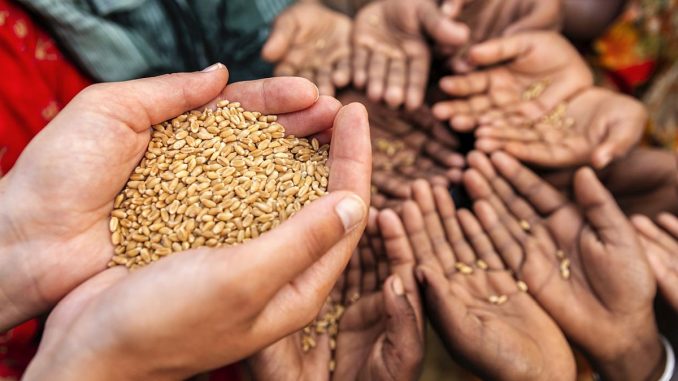
In News
India ranks 94 in the Global Hunger index 2020.
In-Detail
- According to the Global Hunger Index 2020, India has the highest prevalence of wasted children under five years in the world.
- This indicates acute undernutrition of children under the age of five.
- In comparison to 2010-14 where it was 15.1%, the prevalence of child wasting has increased to 17.3% in the 2015-19 period.
- Out of 107 countries in the Global Hunger Index 2020, India ranks 94 which is lower than the neighbouring countries.
- The ranks of the neighbouring countries are Bangladesh-75, Pakistan-88, Sri Lanka-64, Nepal-73.
- The report is released annually by Concern Worldwide and Welthungerhilfe.
- India is classified as worst in child wastingwhich is low weight for height, reflecting acute undernutrition and child stunting which is low height for age, reflecting chronic undernutrition.
- The two indicators together make up a third of the total score.
- India is still in the poorest category though it improved from 54% in 2000 to less than 35% now.
- On the other hand, child wasting has not improved in decades.
- India has improved in both child mortality rate and undernourishment with 3.7% and 14% respectively.
- In the region of the south, east and southeastern Asia, only two countries were worse than India which are Afghanistan, Timor-Leste and North Korea.
- According to the report, globally 690 million people are undernourished.
- The report says that the world is not on the path to achieving Sustainable Development Goal 2 which has called for Zero Hunger by 2030.
- At present, 37 countries will fail to achieve their goal.
Global Hunger Index
- The GHI is used to measure and track hunger at global, regional and national levels.
- The indicators used for the Global Hunger
Index are
- Undernourishment
- Child Wasting
- Child Stunting
- Child Mortality
- The GHI score of a country is classified based on severity like low, moderate and serious.
The Indian Puzzle
India is a fast-growing economy and implements one of the largest anti-malnutrition programmes in the world. Yet, the high numbers of malnourished children in the country is puzzling.
Some experts believe that it is due to the faulty indicators that are used to determine malnourishment. The consideration of height as an indicator by World Health Organisation (WHO) and other international organisations is the bone of contention here. The experts argue that India is a vastly diverse country with some communities having short stature. In such a scenario, how can they be considered malnourished, the experts argue.
Technicality apart, the reality is, India has a huge malnourishment problem, especially in children. Malnourishment directly impacts a child’s cognitive and mental ability growing up. This means they will have tough chances to lift themselves socially and economically. Further, malnourishment perpetuates inequality in society.
Some key factors that will help improve children’s nutrition in the country are
- Access to clean drinking water and sanitation.
- Access to a low-cost and effective healthcare system.
- States’ investment in social welfare schemes.
- Expanding nutrition to adolescent girls.
- Improving the education status of women in the country.

Leave a Reply
You must be logged in to post a comment.